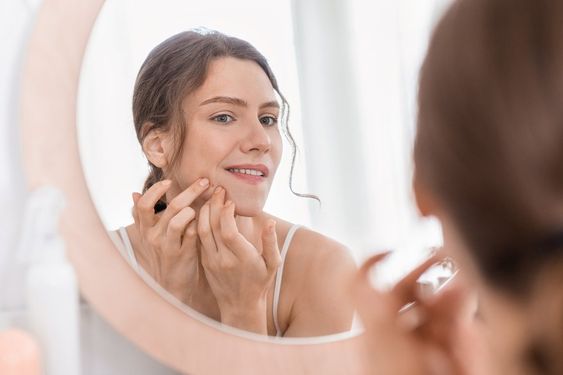Many people who have just developed acne will have such questions, at what stage is it more appropriate to use acne patches? Let's follow me to find out. Acne patches, especially hydrocolloid acne patches, are not the choice in all cases. Let's follow me to find out.

What is a hydrocolloid acne patch?
Hydrocolloid acne patches are special transparent patches, usually made of hydrocolloid material, which can absorb exudate and maintain a moist environment, which helps acne heal. They are designed to be both breathable and waterproof, protecting acne from external contamination during daily activities.
Are acne patches suitable for?
1. Mature acne: When the acne is mature, with pustules on the surface or has broken, it is effective to use acne patches. At this time, the acne patch can absorb pus, reduce the risk of infection, and accelerate the healing process.
2. Small pimples: For one or two pimples that appear occasionally, acne patches can provide local treatment, avoiding the use of skin care products or medications for the entire face.
3. Frequently active areas: If your acne grows in areas that are frequently rubbed, such as the chin, nose, or forehead, acne patches can provide extra protection and reduce the aggravation of inflammation caused by friction.
4. When wearing makeup: If you need to wear makeup, acne patches can protect acne without affecting your makeup. They are usually transparent and can blend well into the skin.
5. During sleep: At night, acne patches can help keep the acne area moisturized, promote healing, and prevent you from unconsciously touching or squeezing the acne during sleep.
What are the situations where acne patches are not suitable?
1. Inflamed, red, and swollen pimples: If the pimples are red, swollen, and immature, the pimple patch may not be able to penetrate the surface of the skin to reach the inflamed area, so the effect is limited.
2. Closed comedones: For closed comedones, acne patches are usually not suitable because they cannot absorb the oil closed under the skin.
3. Large-area acne: If the acne is all over the face, using acne patches alone may not be the effective treatment. At this time, a more comprehensive treatment plan may be needed, such as using skin care products or medications for the entire face.

How to use acne patches correctly?
1. Clean skin: Before using the acne patch, make sure to cleanse your skin thoroughly to remove oil and dirt.
2. Patch Position: Choose an acne patch of appropriate size and apply it on the acne, ensuring complete coverage.
3. Replacement frequency: Replace the acne patch according to the product instructions, usually once a day.
4. Observe the reaction: If you find that your skin has adverse reactions to the acne patch, such as redness, swelling, or itching, you should stop using it immediately.
For more information on Innomed® Acne Plaster, Refer to the Previous Articles. If you have customized needs, you are welcome to contact us; You Wholeheartedly. At longterm medical, we transform this data by Innovating and Developing Products that Make Life easier for those who need loving care.
Editor: kiki Jia

 English
English عربى
عربى Español
Español русский
русский 中文简体
中文简体








